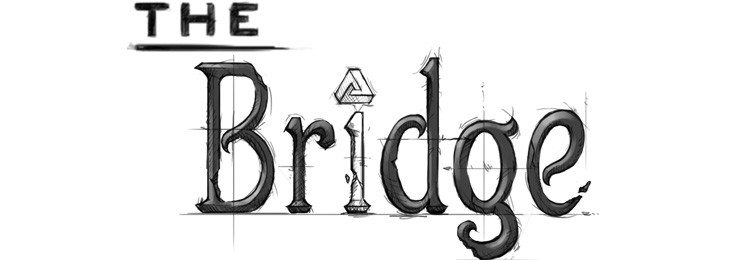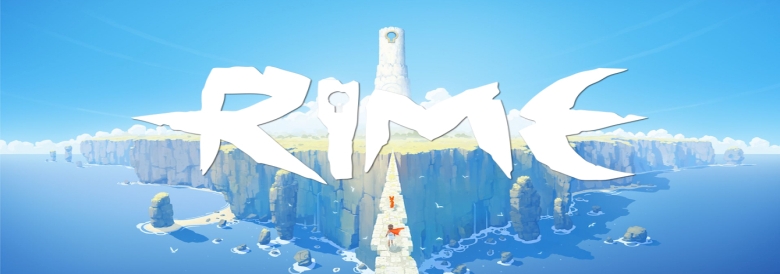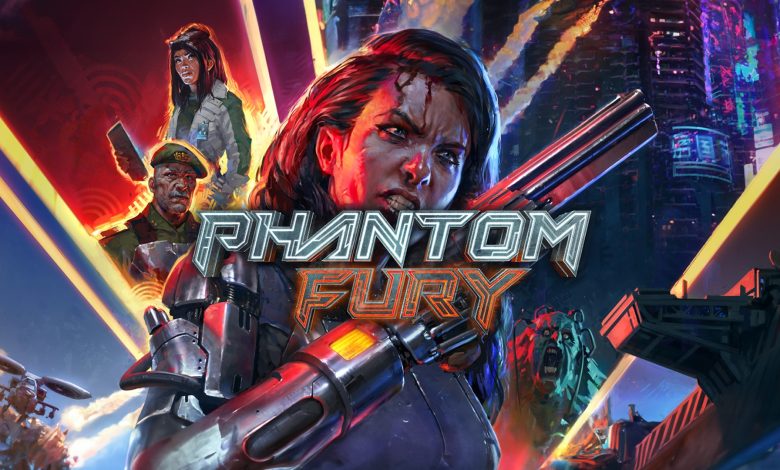
PHANTOM FURY
Phantom Fury is the last, for now, part of the atypical trilogy (a quadrilogy if we count the excellent DLC Aftershock) starring Shelly "Bombshell" Harrison. So what we have here is another First Person Shooter game that pays homage to the past. This time, inspiration is taken from classic games that came out in the late 90s and early 00s, such as Unreal, Half-Life, SiN, Return to Castle Wolfenstein, etc. We had entered a new era for the genre, where it was trying to differentiate itself in gameplay, level design and general feel from shooters like Blood, Doom, Shadow Warrior, etc. that were structured around the requirement for twitch reactions and facing numerous opponents.
The story of the game begins a few years after the events of Ion Fury: Aftershock. Shelly wakes up from a coma, having lost one of her arms, which has been replaced with a mechanical one. Our mission this time is to track down the Demon Core, a dangerous device that in the wrong hands can cause mass destruction. The storyline has quite a few plot holes at the beginning and we'll have to wait long enough to have our questions answered as we go through the campaign. Although the various terminals we find, fill in the picture with some additional information about each area, it's not enough to prevent confusion, even with the minimum expectations we have for an old-school FPS story. It's better to have a simple, but understandable story, even if it's a dressing, than to try to give something more complex with a cinematic aesthetic and not execute it well.
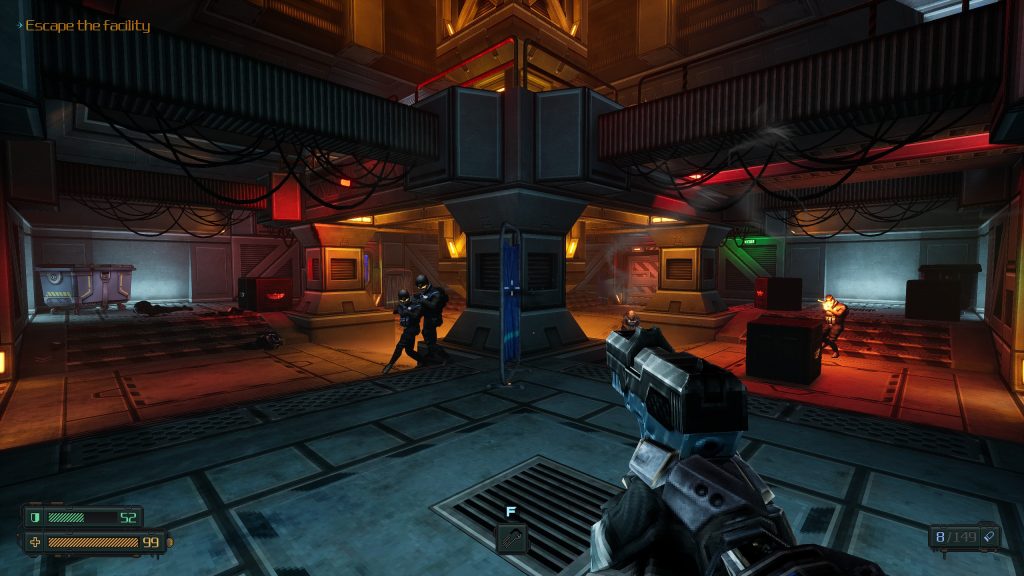
And even if the script stumbles, Phantom Fury's missions are structured in such a way that they are compelling and keep us interested (almost) until the end. The action unfolds through 18 levels that vary in length, from 10 minutes to more than an hour. This expectedly has an effect on their design. Some areas are linear, such as some on-rails shooter sections, some (especially towards the end) are vast, while most of them follow the design philosophy of Half-Life and SiN. This means that the level design doesn't hold our hand from one objective to the next, it favours exploration, and the backtracking is minimal thanks to some shortcuts that take us where we need to be. The first major difference between Phantom Fury and the previous titles is the various puzzles that we come along: from using cranes to stack heavy objects as an escape route, to destroying electrical circuits and distributing limited power to different systems in an abandoned facility (by far one of the most memorable levels in the game).
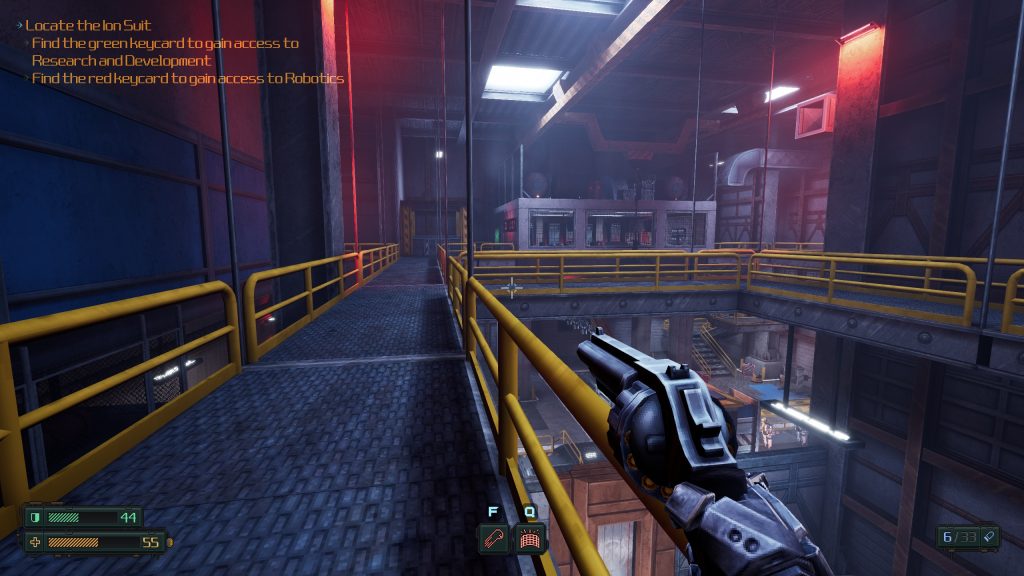
The various secrets (less than the previous games in the series) have been integrated in an organic way. There isn't even a score or a total count of them at the end of each mission. While we traverse each map, we just happen uppon an air vent, a passage hidden behind barrels, a code in an e-mail that opens a locked silo, etc. and we know we've found supplies that will prove valuable for the rest of the game, because the difficulty in Phantom Fury gradually escalates and there will be more than a few times when we'll be crushed by our opponents. Here we have the second major difference in gameplay. This lies in the fact that we'll have to use a combination of strafing and cover, as is typical with the games it's based on, we're not fast enough to dodge enemy fire, especially at close range. The nanite cores that we will find in plain sight or hidden away, allow the relevant stations to upgrade our armor, bionic arm, and of course our weapons. Among other things, upgrades include health regeneration, armor fragments that give us more points in armor, a shield that protects us from blasts, secondary fire modes, etc.
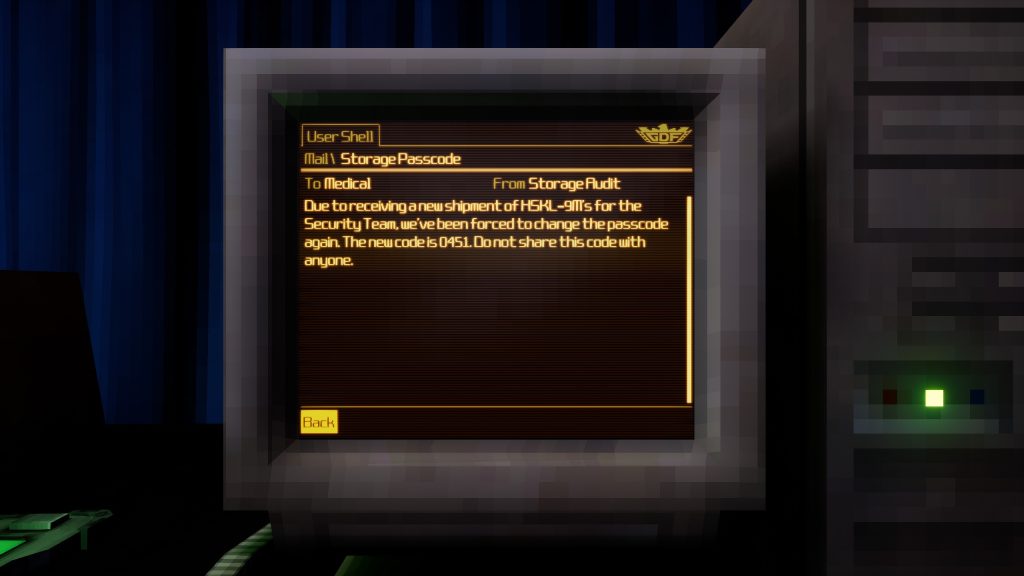
Shelly's arsenal, without exaggerating, is staggering in size. I'm having a hard time to remember when was the last time I saw in an FPS, so much variety in weapons. Between shotguns, revolvers, automatic rifles, energy weapons, there will be always something to tickle your fancy. All the more so when we consider the alternate fire mode than most of them have, giving us a plethora of options to face the challenges that await us in Phantom Fury. At several points we'll even have the opportunity to... yank various miniguns and grenade launchers from their mounts, laying waste to everything in our path!

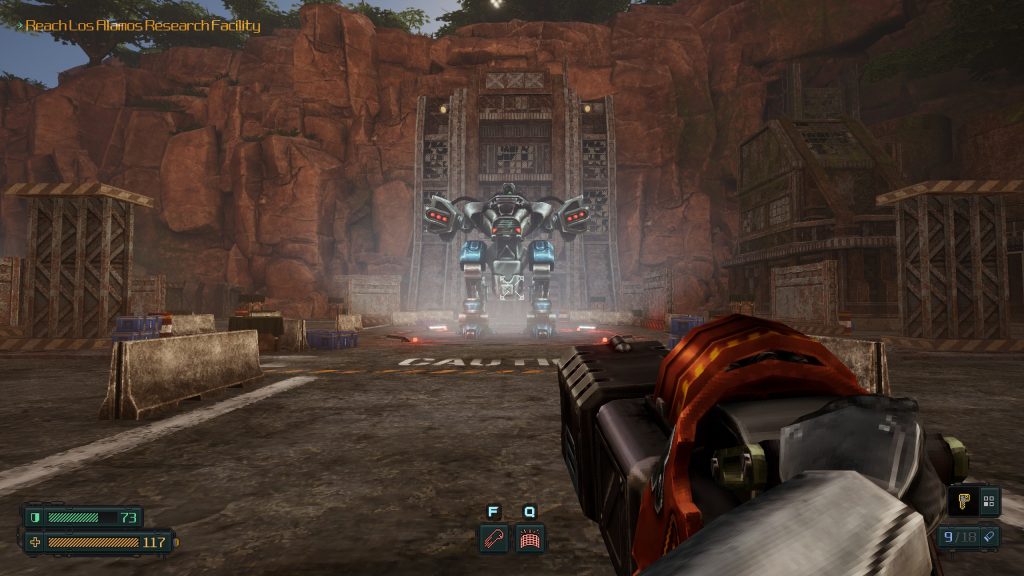
Coming to the end of this presentation, the rating might cause some confusion. Why is it not higher since it's a good production on the whole? This is due to - and it comes as no suprise - technical grievances for the most part, once again. Which are mostly noticeable in the last 1/4 of the title, which shows a rushed release. And if we're used to seeing these from AAA game companies, it's not something we expect from independent developers. Phantom Fury needed in my estimation 3-4 more months of polishing before it had been released. The most glaring issues I came across were:
- The mix of the music in the sound was very low. In fact, for most of the game, there was no music which I doubt was a stylistic choice.
- Problematic physics at various points where there is a possibility when you run over objects such as boxes, barrels etc. you will be hurled far away, with the risk of being thrown out of the geometry of the level.
- Invisible walls that cause confusion in the mostly open levels. In the last few chapters it took me quite a while to figure out where I needed to go.
- The latter levels were not as well developed as the earlier missions. There was quite a lot of empty space, with no encounters/puzzles/anything interesting to discover.
- On some weapons, the alternate fire/upgrade that we had selected in our last save spot, was not retained and we had to select it again.
- Lack of manual saves.
- A pestering softlock bug in one of the later levels. The mission involved lifting a lockdown by placing 3 explosive devices in weak structural points of a facility. Although I had placed the explosives at all 3 points, the game retained the objective to use the last explosive active, resulting in the next objective not being triggered, which was to escape from the base. After a lot of pointless wandering around and a video walkthrough later, I found that the only solution was to start the level from the beginning...
The overall evaluation for the Phantom Fury is positive. I can't overlook the intensity of most of the encounters, the sense of adventure and organic transition from one chapter to the next, and the variety in scenery and gameplay that escaped the philosophy of non-stop action of its predecessors. If the good level design and the intrigue to see what comes next hadn't been replaced by the monotony of unnecessarily large empty spaces, interspersed with predictable battles (the last few chapters dragged on so much that, with the exception of a few neatly placed sections, they were getting tedious) and the various bugs poking out the seams of the code, the game would certainly have scored much higher. However, the developers don't seem indifferent, having just released a major patch, and so if support continues it will soon reach the level of quality it should have had at launch.
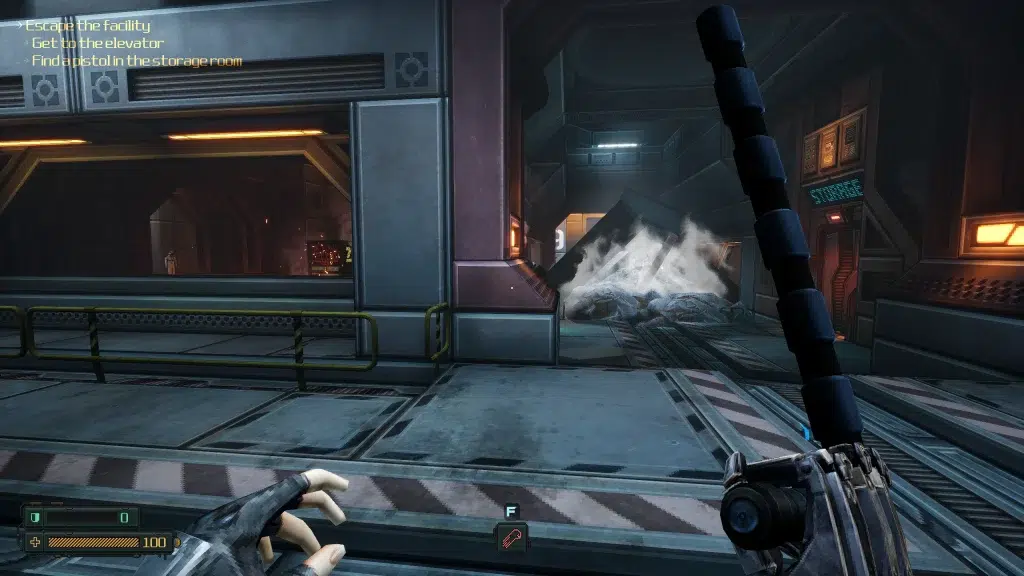
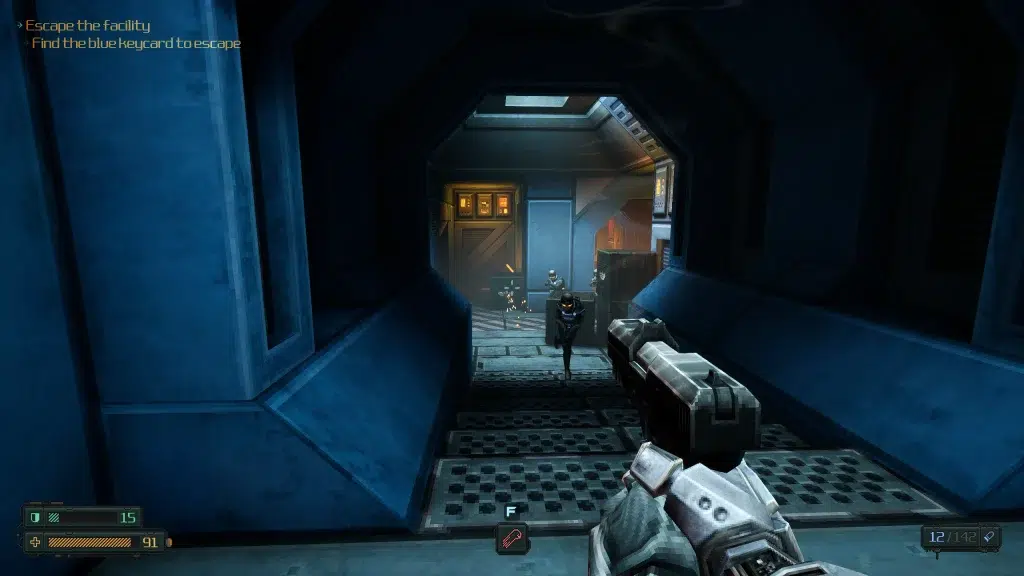
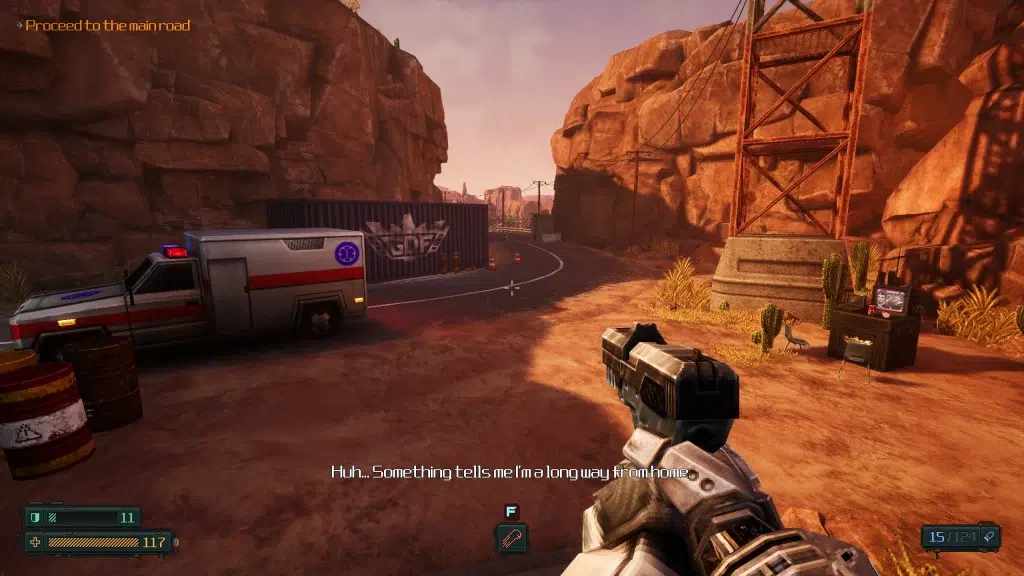
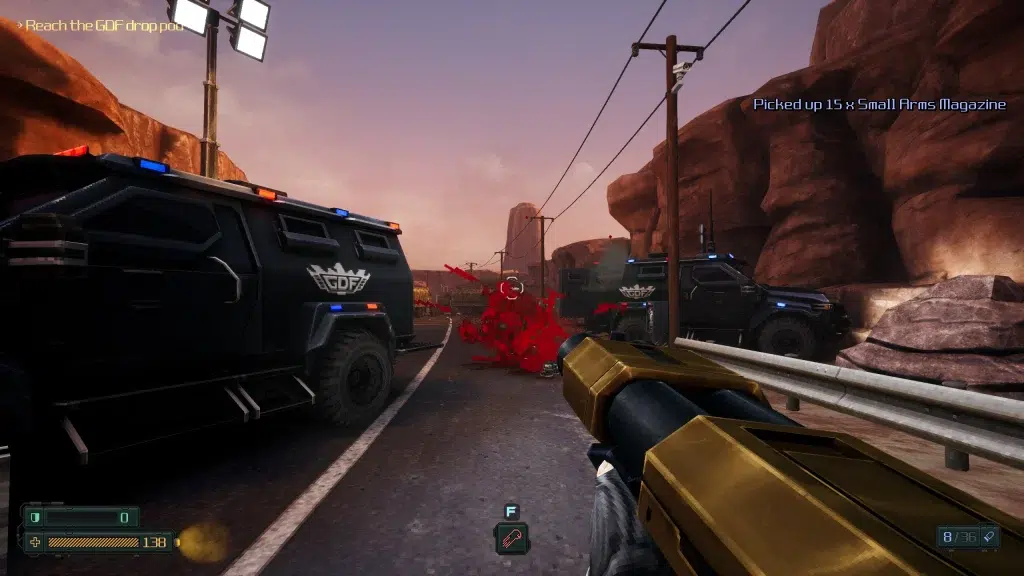
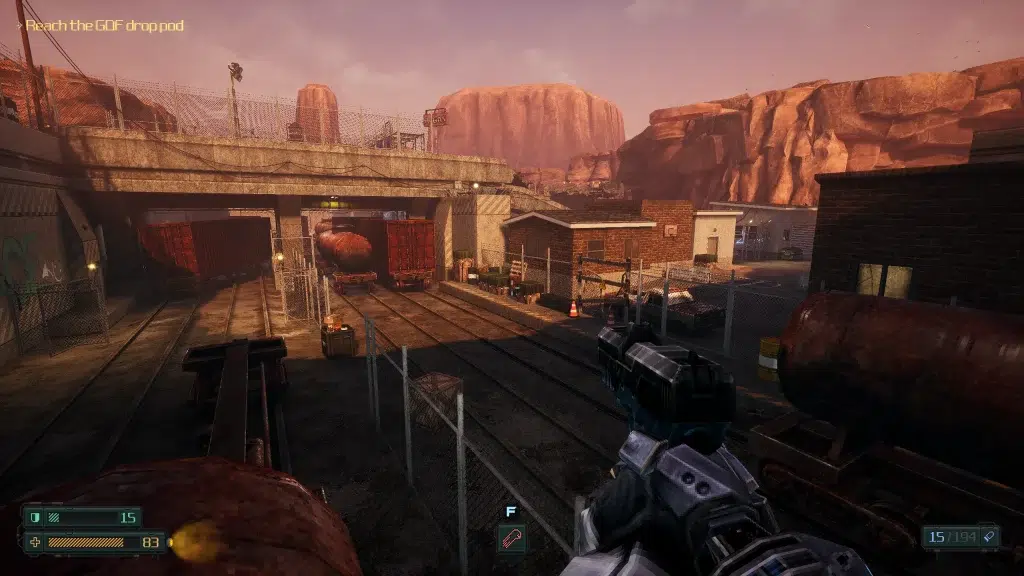
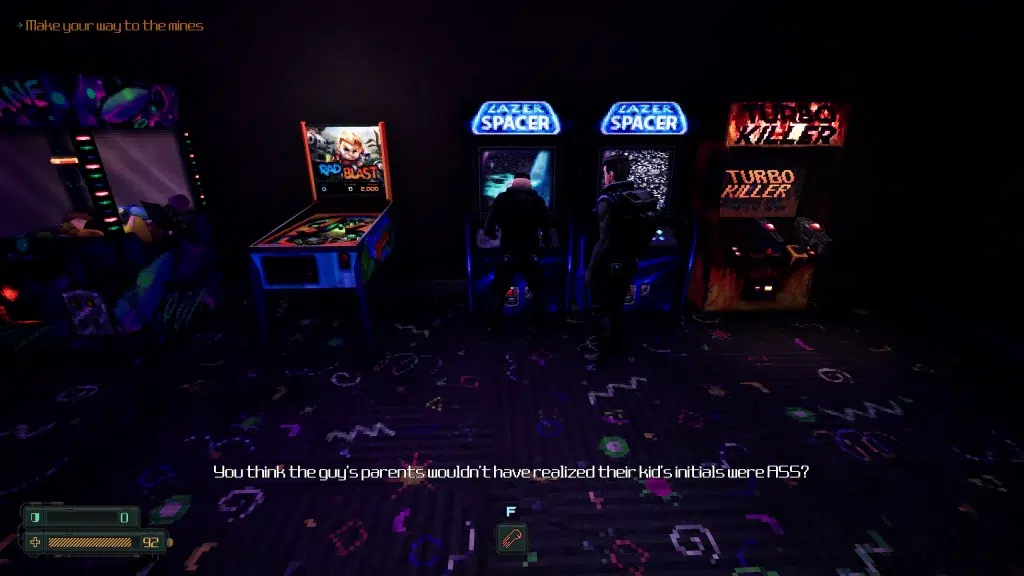
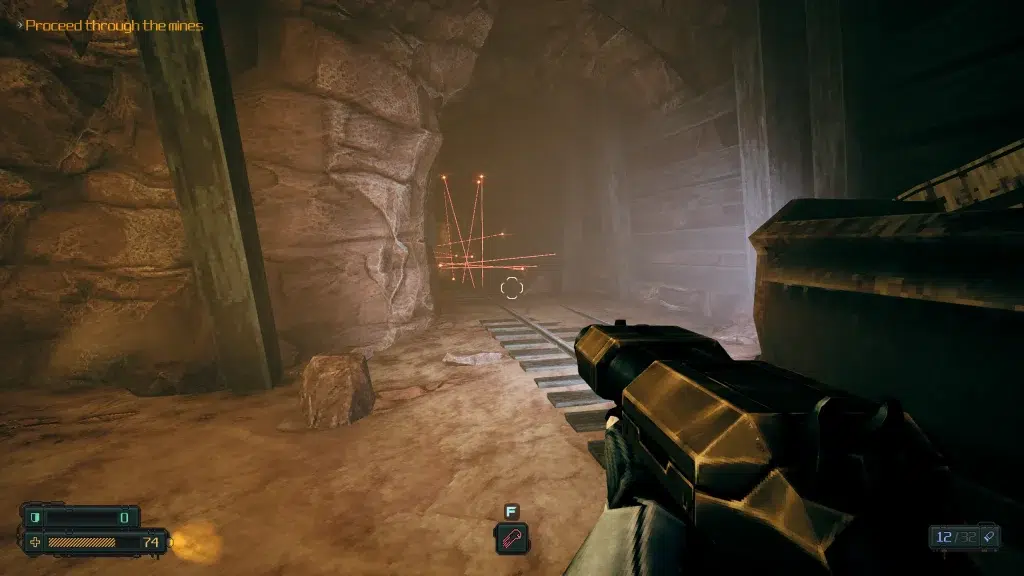
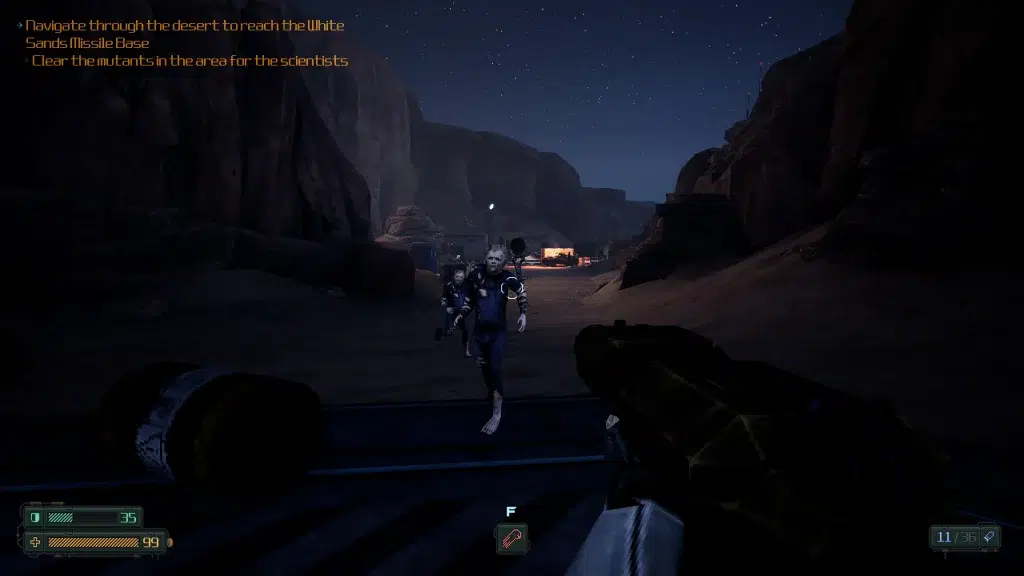
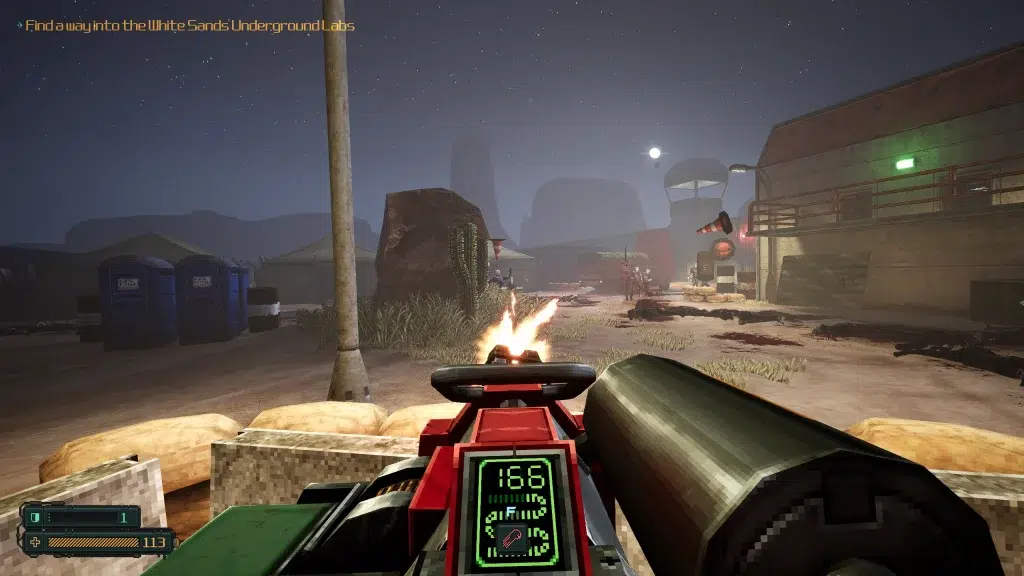
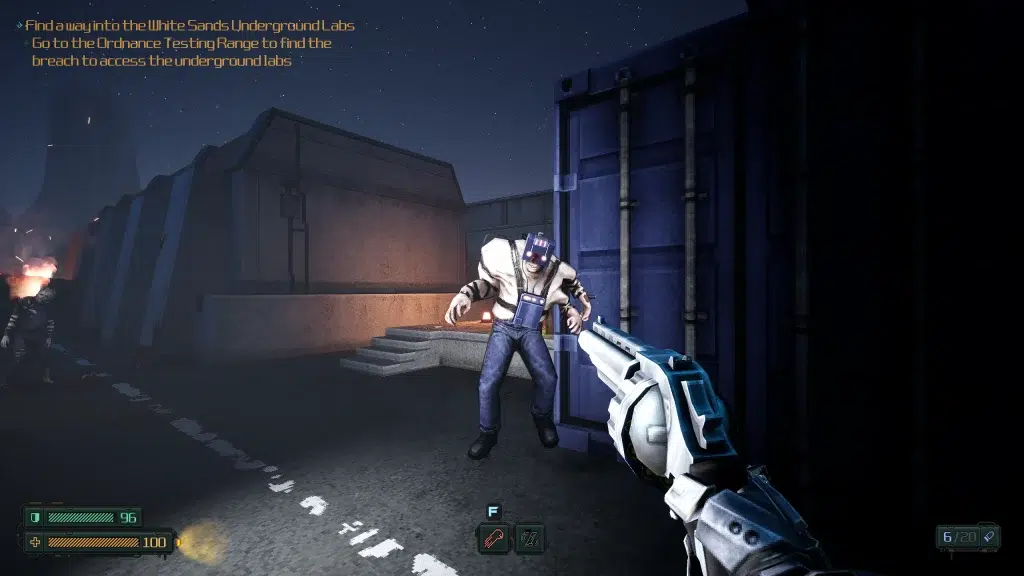
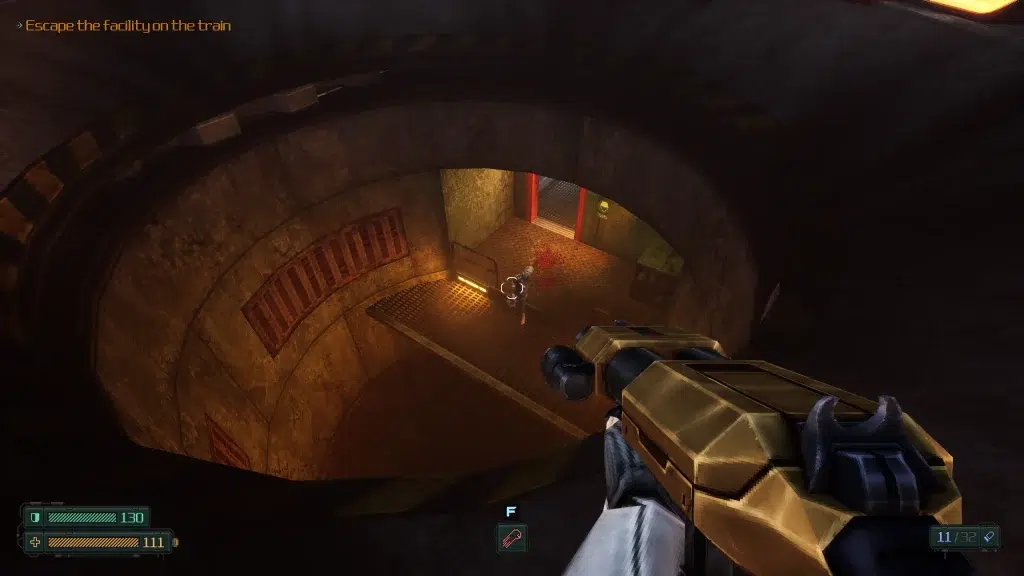
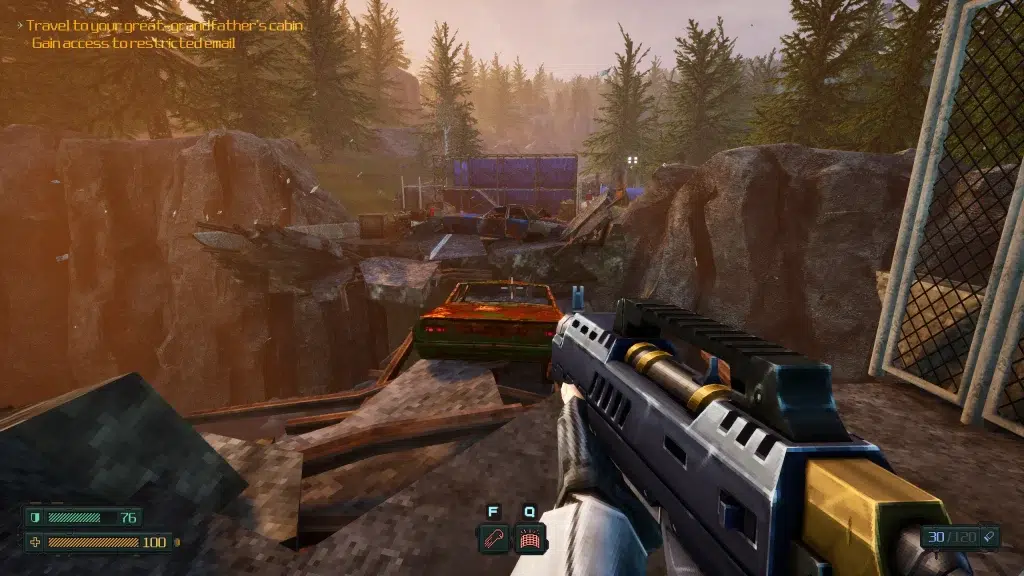
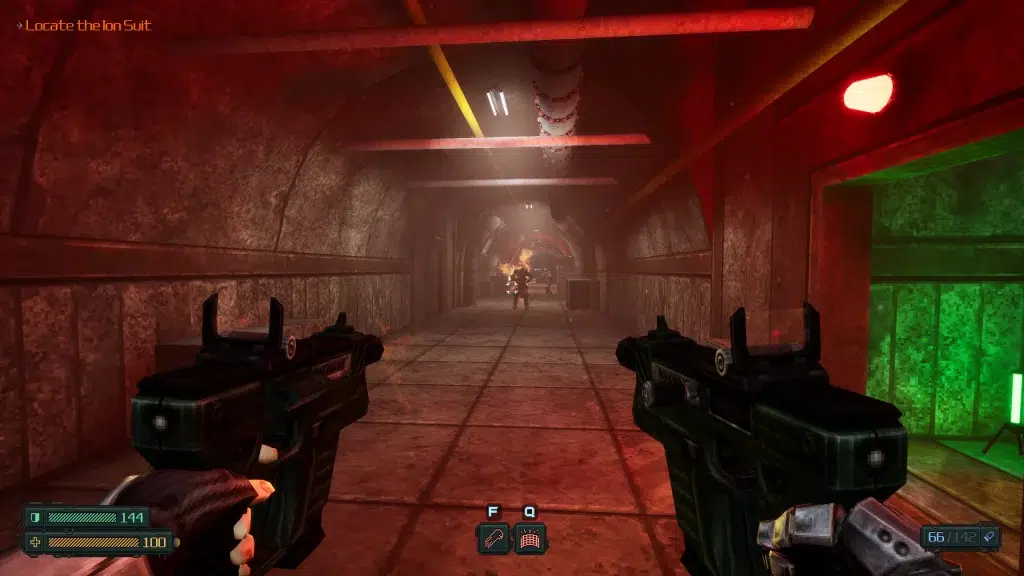
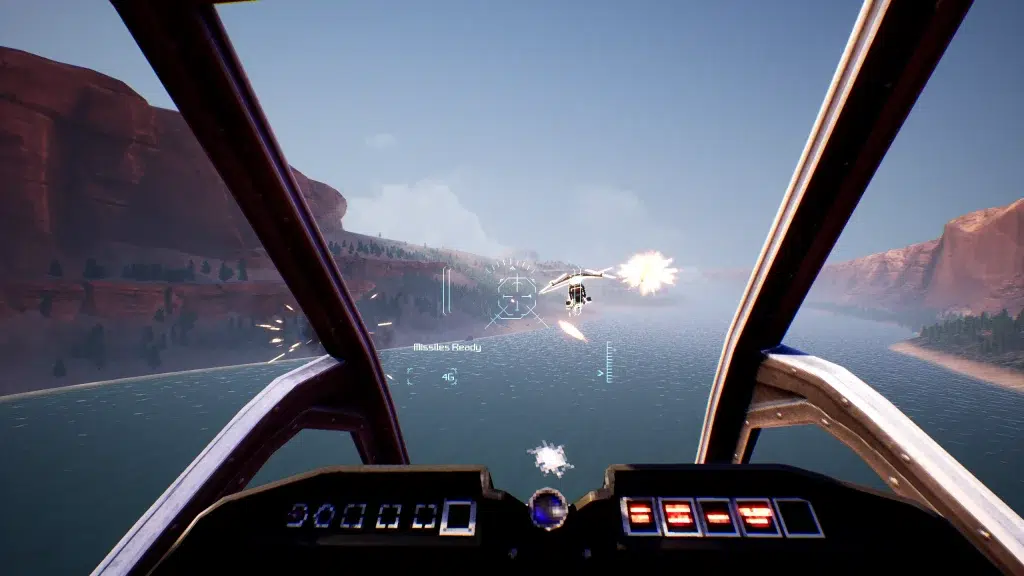
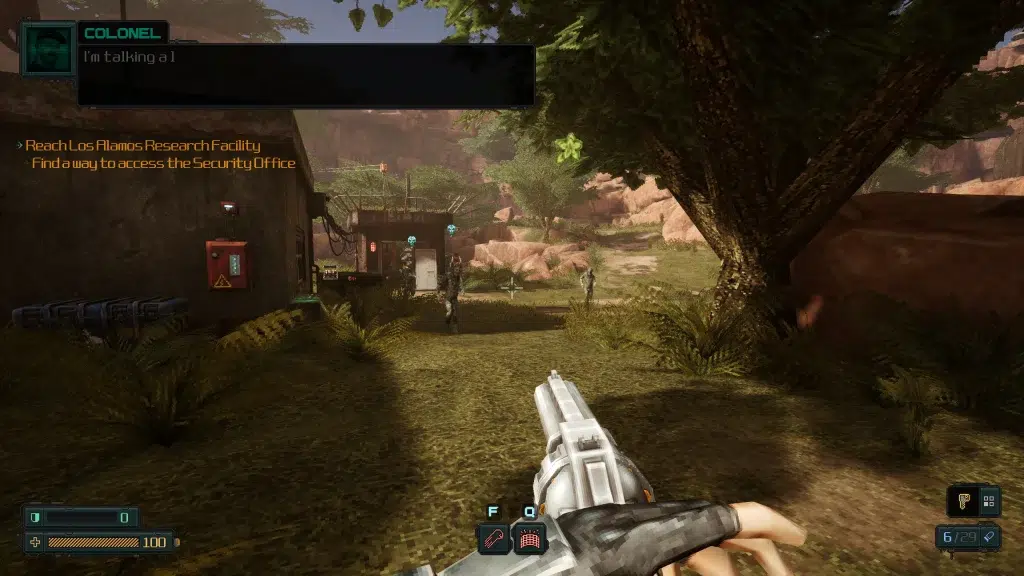
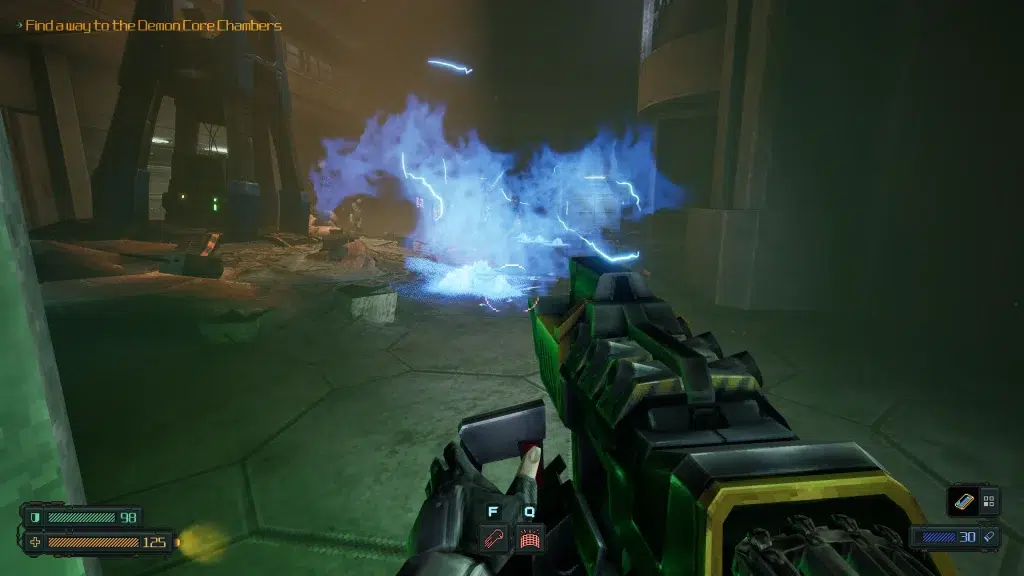
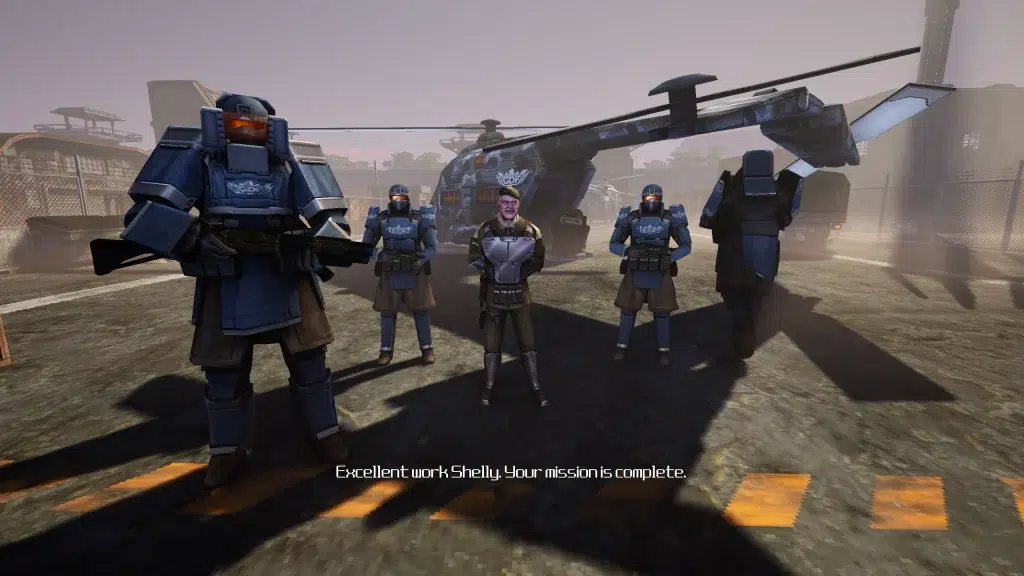
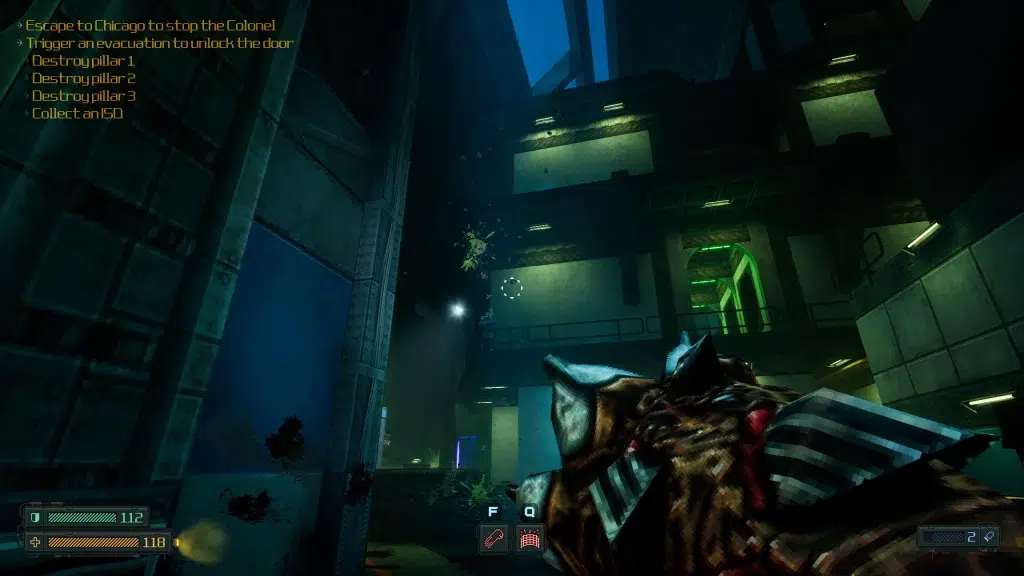
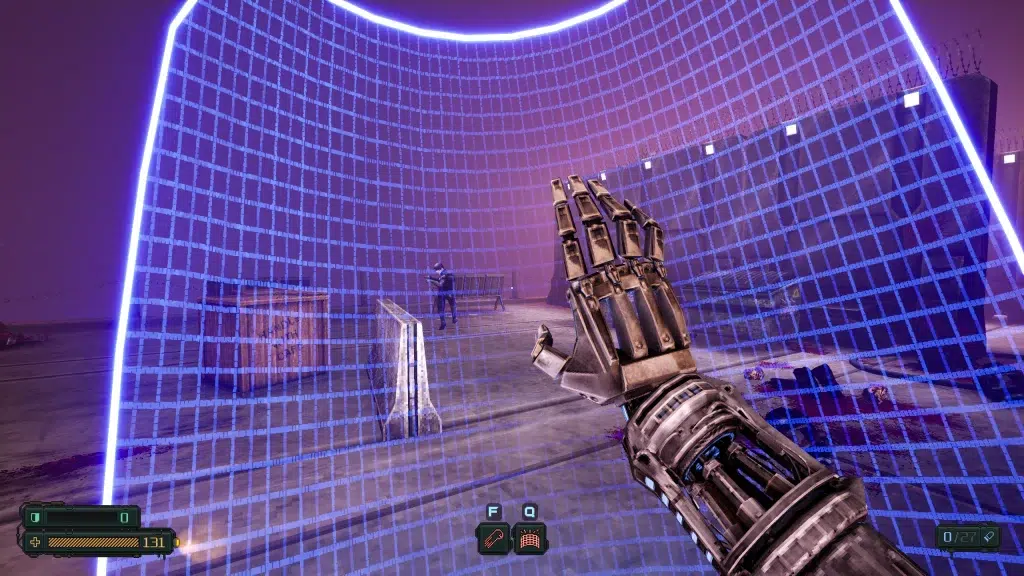
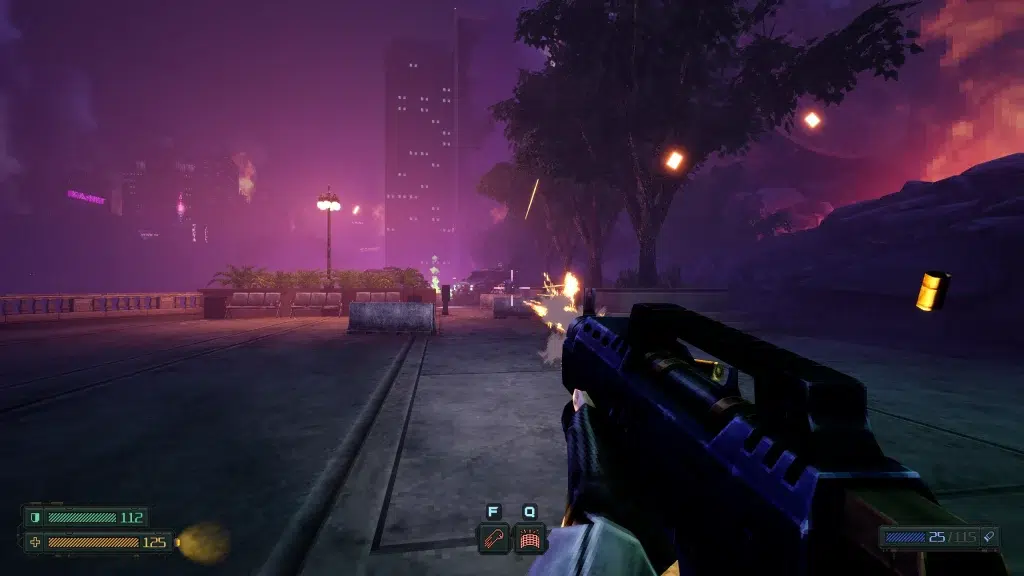
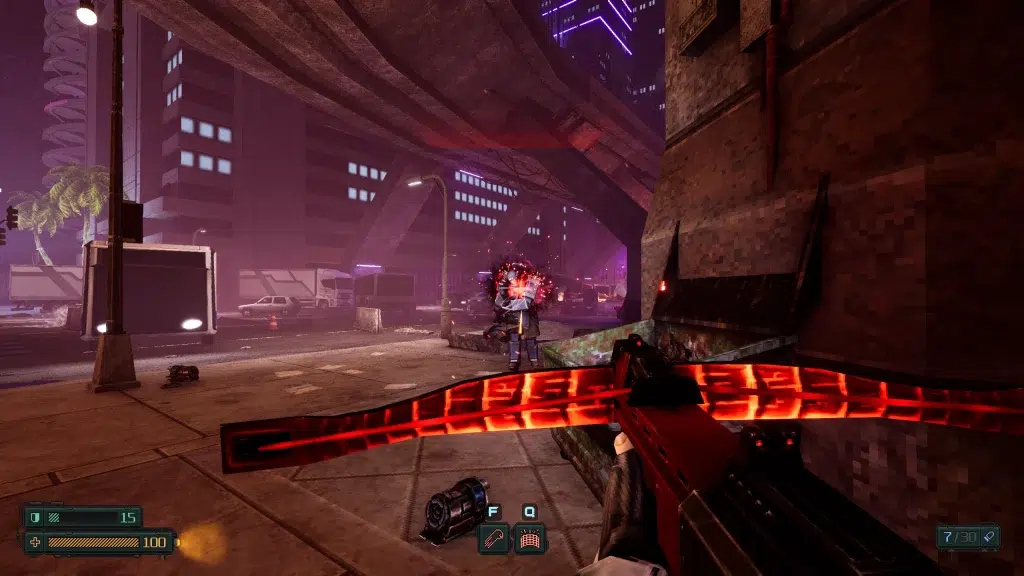
RATING -76%
76%
In another reality, 2001's Duke Nuke Forever would have followed a different development path and ended up as Phantom Fury.

